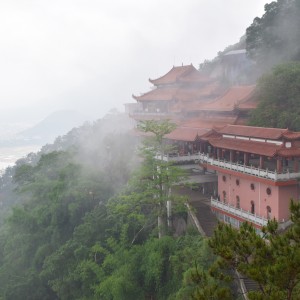If food can talk, it would be full of love in all (Foochow) conversations.
But we Chinese have a saying that we should allow our food to speak on our behalf.

One of the best food that my maternal grandmother would make for the whole family would be cuttle fish boiled with Chow Yi Char or the Smelly Root (Wild Pepper Roots) which was then considered poor man's ginseng.
Dried cuttlefish in the 60's was cheap and plentiful. My grandmother would always have a tin full of it in the kitchen, ever ready for a good soup.
Once every few weeks and especially during the school holidays we would have this soup, with fresh pork leg bought from Sibu. My grandma would leave early in the morning by motor launch for Sibu and then return by the noon motor launch.
By evening the whole kitchen would be filled with the fragrance of the health giving and truly nourishing soup. The pork leg would be chopped up into small bit sizes pieces and the dried cuttlefish cut into small slices and softened. In those days, grandma would put into two or three cuttlefish just to add more fragrance to the soup. It was my grandmother's way of showing her love for her hard working son, Pang Sing, who would return to work in Sibu was a wharf labourer, in between periods of smoking rubber sheets.
She was always conscious of the fact that she must help her hardworking son replenish his energy.
We could eat the cuttle fish and pork leg soup in two ways, one with rice and the other with soh mien or longevity noodles.
I love the soup with lots of garlic and Foochow red wine.
Somehow I remember the pork leg to be especially big, and the family would make the dish last two or three days with lots of reheating in the huge Chinese kuali on the Foochow Stove.
It should definitely be considered our Foochow way of showing love and family bonding through a soup.
On the other hand, I have a very lovely story about my own paternal grandfather who loved a pork leg every now and then.
Most Foochow household budget would be controlled by the man of the house in Sibu. And sometimes by the very capable wives.
Once my grandfather came to visit us without any notice. We had just moved to the wooden house in Kung Ping Road/Brooke Drive, Sibu.
And he brought a pork leg as a present. My mum was not surprised because grandfather loved good food. He had a good reason to stay with us as he said as he wanted to help my father repair the big Foochow wood stove, which was actually constructed by him.
My mother used an enamel pot to double boil the pork leg with cuttlefish and a bit of Foochow red wine. The dinner that evening was very special as father and son spent a long time eating and chatting. It was often said that my grandfather and my father loved talking to each other. My mum and we children would be away doing our chores and homework.
After reflecting on my mother's cooking, my grandfather the next day, took the huge kuali to clean in the backyard,scrapping away the soot.That was how I learned about keeping the kuali's bottom free of black soot and how to get the kuali hot quickly. Grandfather also cleaned the chimney very meticulously. He then slowly repaired the small cracks of the stove. By the time he left, our stove was functioning very well and mum was most happy about it.
His parting remark was ," Hung Chuo , try to cook another pork leg and see if it is easier for you..."




















